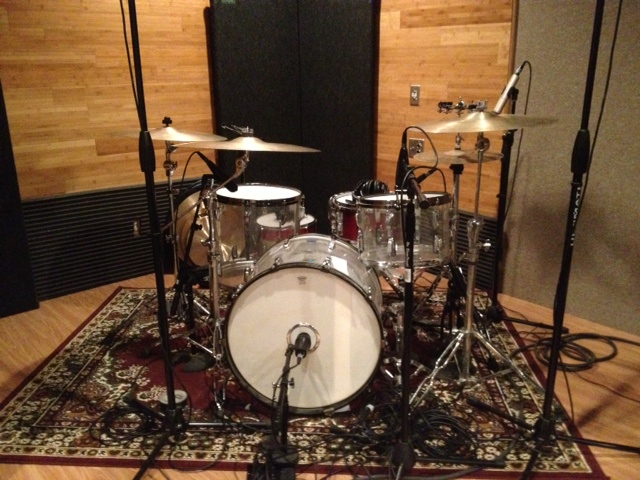Recording Drums at home can be very challenging. You can achieve great results at your home set up even if you don’t want to spend a lot of money for a big studio setup. It requires a little bit of practice, understanding the mics and the room. Let us jump into the recording process. Generally, you will require an 8-channel mic pre interface to record your drum kit. But in some cases, you can also manage with a 4-channel Mic Pre interface using minimal setup.
- OVERHEAD Mics / ROOM Mics
You can use any pair of condenser mics for capturing the overall cymbals and the drum kit from the top. The best position to place the mic is about 5.5feet above the ground and place the LEFT and RIGHT at an equal distance from the kit to avoid phase cancellation. You can also position the mics as XY position closer to get a different tone in your recordings. You can use the RODE NT5 or Neumann KM 184 mics depending on your budget.
- KICK DRUM Mic
For recording the kick drum, place the mic slightly on the outer skin of the kick drum to avoid the blow in your mic. Usually, I place it 2-3 inches away from the hole of the kick drum skin. You can use the AKG D112, Sennheiser MD 421 or even an AUDIX A6 mics for this purpose.
- SNARE DRUM Mic
The most important element of the kit is the Snare drum. This has high SPL and Attack by nature. So the best position to place the mic to point the Mic at the Center of the SNARE drum. You can use any Tape to dampen its ringing sound which you might want to avoid. Also, you can place another mic at the bottom of the Snare to capture the Sizzle sound of its metal belt and blend both the sound in your mix. You must watch out for Phase cancellation if you are doing this. Suitable mic – SHURE SM 57 dynamic mic. I strongly recommend the SM 57 which is the best for SNARE Drum.
- HI HAT Mics
For the Hi Hat cymbals, place a dynamic mic or a Condensor mic to capture that Extra High Frequency in your recording. Generally, I use the Rode NT 5 small Diapharm condenser mic because it gets the High frequency and rejects the off Axis sounds from other instruments getting into the HiHat Sound.
- TOM Mics
For recording TOMS in your drum kit, you can use the Dynamic mic like the MD 421 or an ideal SM 58 mic if you don’t have any mics in your collection. I prefer the MD 421 for capturing two toms at the same time by placing the mic at the center of two TOMS. You will get a natural sounding tone in your recording.
- CRASH & RIDES Mic
To record and capture the Cymbals in your kit, I recommend the Small Diaphragm Condensor mic like the RODE NT5A. You can the mic few inches away from the cymbals on top so that you get that Airy sound coming from the Cymbals of RIDE and CRASH. If you don’t have any mics, you can position the two OVERHEAD Mics closer to capture the cymbals.
- MIC BUNDLE KIT
Generally, if you don’t have the big budget for buying mics for the kit, you can get the SHURE DRUM Mic kit or AUDIX DRUM mic kit or even the economical options which are the SAMSON 5-Piece Drum Mic Kit. Hope these points would be of great help to record your drums at home. Happy Recording!
Author:
L. Baba Prasad. He is the Owner and Chief Sound/Mix & Mastering Engineer at Digi Sound Studio. He also teaches Sound Engineering and Music Production courses. For more details, visit www.digisoundstudio.com / www.digisoundacademy.com
This article was featured in our September issue: http://bit.ly/2fcEfuT








